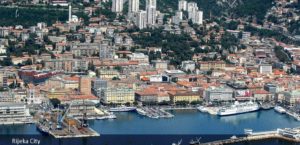Here is some background information about the state-of-the-art that forms the starting point for the research within STREAMER, whose results will be validated in the 4 real projects involving the Implementers Communities. The outcome will be used to extend the standardisation in EeB design and operation, open BIM-GIS (IFC-CityGML), and Integrated Project Delivery (IPD).
The expected impact of 50% reduction of energy consumption of healthcare districts in the next 10 years that will be measured during the project refers to the actual demonstration cases of 4 hospital districts with actual (from now until 2020) energy-efficient building (EeB) design plans:
1. The Rotherham NHS Foundation Trust, United Kingdom
2. Stichting Rijnstate Ziekenhuis, Arnhem, the Netherlands
3. Azienda Ospidaliero – Universitaria Careggi (AOUC), Firenze, Italy
4. Assistance Publique-Hopitaux te Paris, (AP-HP) France
The outcomes of STREAMER will be validated through action research in the design phase of the new buildings and retrofitting projects in the 4 healthcare districts described above. The building, district and project types, sizes and scopes are representative to the EU typologies. All cases are large scale hospitals in mixed-used healthcare districts including offices and other buildings. Three cases (NL, IT, FR) involve academic hospitals where hospitals are combined with the university facilities.
[epq-quote align=”align-left”]In STREAMER design optimisation, BEM (Building Energy Model- based on semantic BIM + GIS) will be developed for each of the above mentioned hospital, including the energy calculation.[/epq-quote]
Rationale
Healthcare buildings and districts are among the top EU priorities for Energy-efficient Buildings (EeB) since they play a key factor for a sustainable community, but their energy use and carbon emission are among the highest of all building types. A hospital –which is a part of a healthcare district– uses 2.5 times more energy than an office in average. There are some 15,000 hospitals in the EU responsible for at least 5% of the annual EU’s carbon emission (~ 250 million tonnes). Healthcare accounts for nearly 10% of EU’s GDP, and hospitals can take up to 60% of a country’s health expenditure (source: WHO and European Hospital and Healthcare Federation, 2012 statistics).
In order to cope with the energy, financial, political, societal and environmental crises, all healthcare districts in Europe are urgently seeking to substantially reduce their energy consumption and carbon emission by 30–50%. Therefore, they are planning new energy-efficient building projects as well as energy-efficiency retrofitting of the existing buildings. At present and in the near future, clients, architects, technical designers, contractors, and end-users really need a breakthrough in designing energy-efficiency buildings integrated in the healthcare districts.
The critical bottleneck is the inadequacy of the existing design methodologies to create holistic Energy-efficient Building (EeB) solutions for newly designed and retrofitted buildings in healthcare districts. Considering the complexity of EeB design, both holistic and systematic approaches are crucial in order to achieve the project’s goal. STREAMER will resolve this by optimising Semantics-driven Design methodologies with interoperable tools for Building and Geo Information Modelling (Semantic BIM and GIS) to validate the energy performance during the design stage. Once completed, STREAMER, will enable designers, contractors, clients and end-users to integrate EeB innovations for: 1. building envelope and space layout; 2.medical, MEP and HVAC systems; and 3. building and neighbourhood energy grids.



